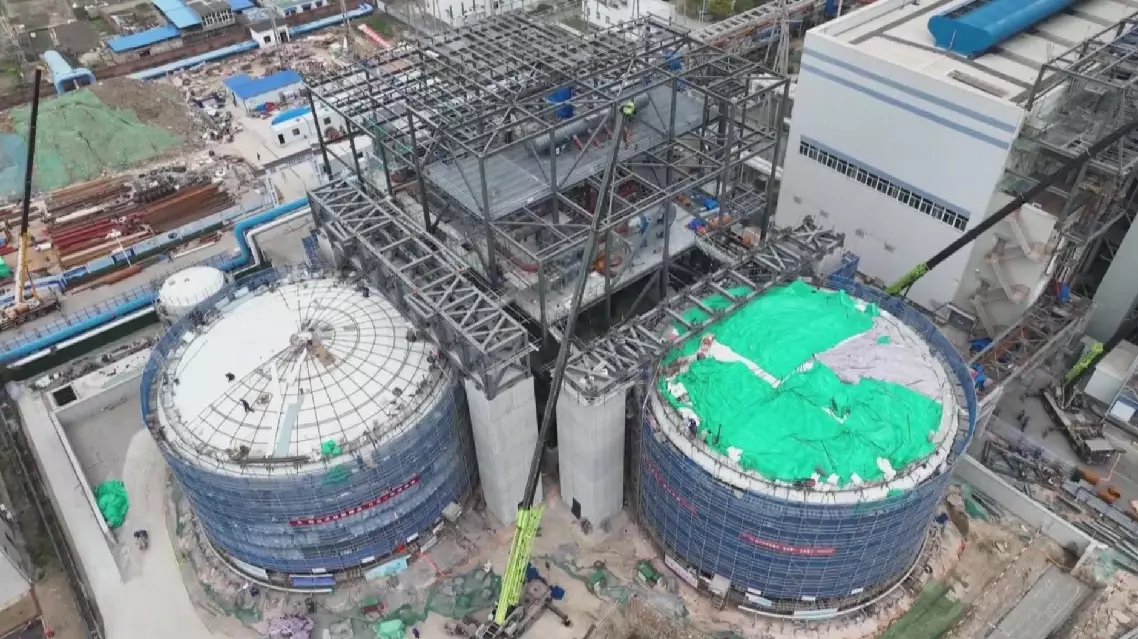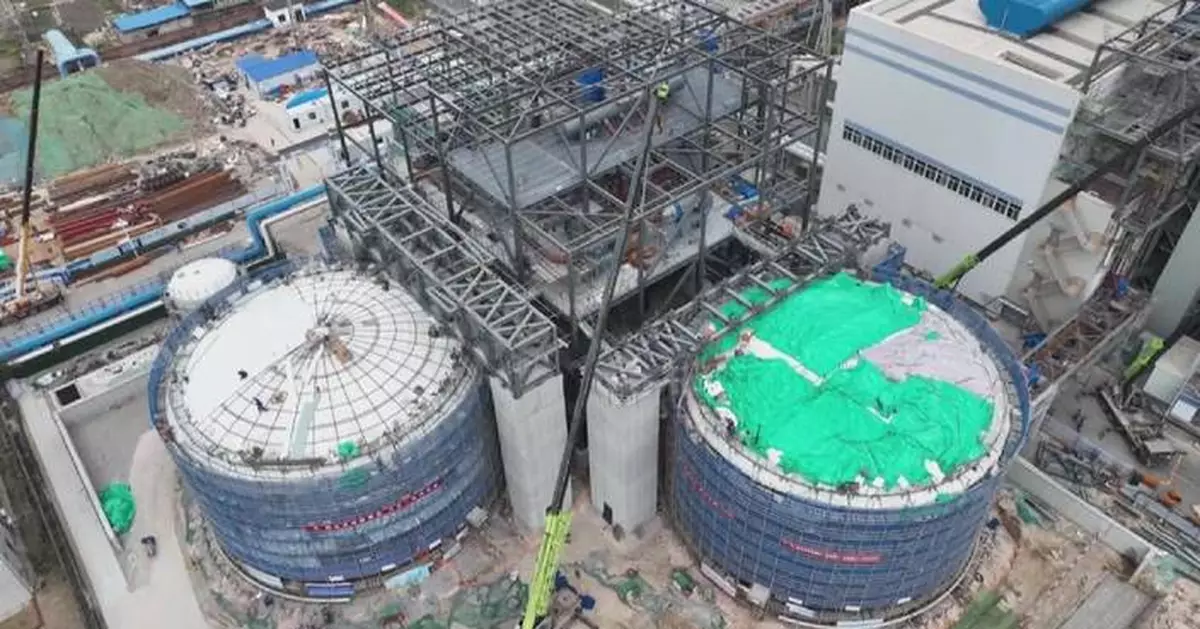A power plant in east China's Suzhou City, Anhui Province, has installed two massive molten salt tanks, improving load following, steam supply, and grid stability at the aging facility.
Situated downtown, the two coal-fired units at Suzhou Power Plant have supplied both power and heat to the city's residents.
As Suzhou works toward carbon peaking and neutrality targets, the two units have been experiencing more frequent peak regulations, startups, and shutdowns, causing fluctuations in heat generation. This unstable steam supply has significantly affected power generation stability.
Mainly using ternary molten salt and designed with a thermal storage capacity of 1,000 megawatthours (MWhs), the two newly built giant molten salts tanks are expected to ensure original heat generation capacity, enhance load-following capability of the coal-fired units, and boost the transformation of the old power plant.
"Once the project is completed, the power generation units at the Suzhou Power Plant can achieve continuous heat supply for 4 hours while operating at full capacity. They can also ensure continuous heat supply for 5 hours even when operating at 30 percent of the rated load to achieve deep peak shaving. At the same time, its heat generation capacity will reach 410 tonnes per hour, which is 260 tonnes higher than the previous level," said Qiao Yancai, head of molten salt energy storage at the Suzhou Power Plant.
The project will help reduce standard coal consumption by 32,000 tonnes and cut carbon emissions by about 85,000 tonnes annually.

Molten salt energy storage revamps aging power plant in east China's Suzhou






















































